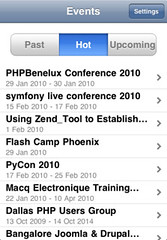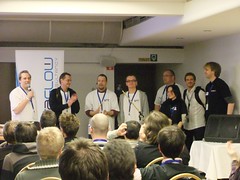This year I had the privilege of speaking at this event, although I was concerned that I had to stay coherent and alert right through to the graveyard slot at 4:30pm (conference organisers take note: I really am much sparklier in the mornings!). I kept myself awake by attending what I affectionately refer to as the “Ibuildings track” – with 4 speakers at the event, it did feel like a bit of an invasion by myself and my colleagues. In our defence I can only say that we are a pretty big local PHP employer and, as a developer, I’m happy to be working for someone who sends all their developers to these events, and even happier to be in the company of those other excellent speakers as colleagues!
My talk was entitled “Best Practices in Web Service Design” although perhaps “Things I Wish Web Service Creators Would Consider Before Writing Unclear and Unstable Useless And Frustrating Services” would have been a better title! I talked about web services in general, a bit about HTTP and the various service types, and also gave some general tips and tricks for writing good, stable services. In a bit of a break with geeky tradition, I then talked about services as a whole package, and how to deliver and document them in a way that helps users help themselves. If you are interested the slides are here:
http://www.slideshare.net/lornajane/best-practices-in-web-service-design
The experience was overall very positive for me, I haven’t spoken at this conference before and I was very pleased to be included. My talk went quite smoothly, with my nerves nicely hidden away (I’ve had issues with this lately), and I also avoided falling over either the curtain or the piece of screen that was carefully placed to trip unwary speakers! I’d like to thank everyone who came and asked questions afterwards, and all those who saw my talk and left comments for me on my joind.in talk page – it all helps me to do better next time, thanks and I’ll see you all next year!




